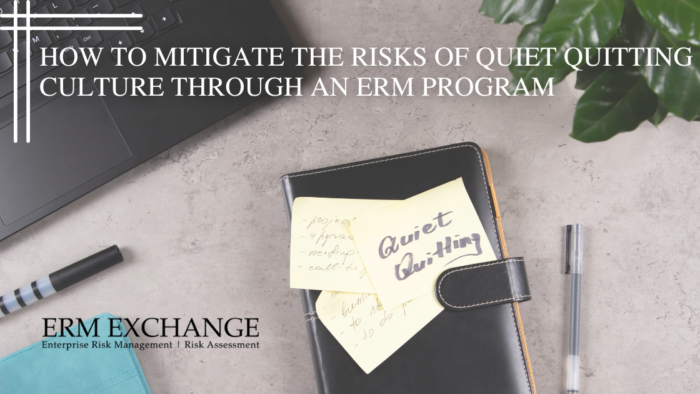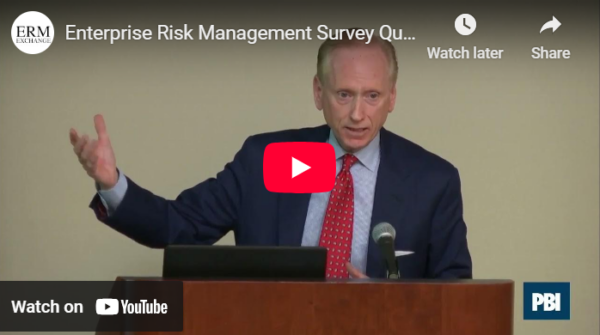
The Great Resignation has given rise to another new term, “Quiet Quitting.” Quiet quitting refers to an employee who has chosen not to resign, but rather become less psychologically invested in their work. Less inclined to stay later, arrive earlier, and otherwise less inclined to hussle, and perhaps most importantly – less inclined to care about the enterprise they serve on a day-to-day basis.
The quiet quitter unenthusiastically admits, “I’ll do my job. I’ll do my work for eight hours. But when I am off the clock, I’m off duty.”
What Gave Rise to Quite Quitting?
In the wake of the pandemic with its quarantines, uninspiring video conferences, and isolation many employees have resigned their jobs to pursue something different for work and life in general. They are burned out, and they’ve ‘checked out’ in what is referred to as the Great Resignation…at least for now. This is understandable. Adapting to remote working on such a short time frame in March 2020 and continuing with the new routine was very difficult for a great number of people. The mental health crises that were created from the pandemic will evolve and probably grow for years to come.
Other employees have decided not to resign. Rather, they will continue to work for their employers, however they have decided to become less psychologically invested in their work. They will give an honest day’s work for an honest wage…but nothing more. No more arriving early or staying late. No more checking messages in the evening and before bed. And certainly, no more working weekends. Rather, these employees have decided to balance their lives, ignore the stress of corporate life, and focus their “free-time” on themselves. They have dropped their ambition to succeed professionally, dropped their willingness to navigate office politics, and dropped their desire to grab a higher wrung on the corporate ladder.
Generation Z is getting most of the blame…but pointing the finger at GenZ seems to be an overly simplistic way of looking at the situation.
Is Quiet Quitting Culture Really a Problem?
According to a Gallup poll in June 2022 of approximately 15,000 full and part-time employees 18 years of age and older, “quiet quitters” make up at least 50% of the US workforce. The Gallup organization believes the number is probably higher. Gallup reports that 32% of employees remain “engaged” in their job responsibilities, however the proportion of “actively disengaged” employees has increased to 18%. That is a ratio of 1.8 to 1.
Gallup reports the rise in disengagement began during the second half of 2021, as younger employees experienced a lack of clarity regarding job expectations, less opportunity to learn from their managers and grow professionally, less of a perception of feeling cared-for, and a disconnection to their organization’s mission or purpose.
Arguably, in previous decades the concept of quiet quitting was simply called “having a job” according to Derek Thompson of The Atlantic. Both Gallup and The Atlantic have reported the annual average US Employment Engagement Trend since 2000. Essentially, the ratio of “engaged” to “actively disengaged” employees grew from 1.44 to 1 in 2000 to 2.57 to 1 in early 2020 before the quarantine. However, the current ratio of 1.8 to 1 is tightening and exhibiting a rebound in the actively disengaged component of the workforce.
As Gallup indicates, younger workers have dropped 10 or more points in the percentage who strongly agree that “someone cares about them”, “someone who encourages development”, and “have opportunities to learn and grow”. Gallup adds, “Disturbingly, less than four in 10 young remote or hybrid employees clearly know what is expected of them at work.” Clearly, quiet quitting culture is eroding productivity. But what may not be as obvious is its impact on an organization’s ability to successfully execute corporate strategies by managing the risks to achieving goals and objectives.
Solutions to Quiet Quitting – Managers not Managing – Employees Seeking Direction
Let’s face it, managing people months on end, over a screen in a remote working environment is difficult for most of us. Which is why it seems unfair to point most of the blame at GenZ as quiet quitting culture appears to be more symptomatic of poor management.
Gallup offers four very high level solutions to begin solving the quiet quitting dilemma.
- Mid-level managers must re-skill to succeed in the new hybrid environment.
- Managers must learn to engage with their employees to help reduce burnout and disengagement.
- Managers must have “meaningful” conversations (with their staff) at least once per week for 15 to 30 minutes.
- Managers must create accountability for individual performance, team collaboration and customer value. Employees must be given the vision to see how their work contributes to the organization’s higher purpose.
So, what is the big take-away from all of these statistics? In a nutshell, every successful organization must foster a culture in which people are engaged and feel they belong. As Peter Drucker famously said, “Culture eats strategy for breakfast.” Perhaps stated more compassionately, good culture breeds success.
Quiet Firing
By the way, there is an opposite dynamic developing, called “Quiet Firing.” Quiet quitting may initially be less obvious to the employer or manager. But similar to quiet quitting, “quiet firing” is less obvious to the employee. Quiet firing initially evidences itself by eliminating certain responsibilities, assigning less challenging tasks, denying promotions, and meager to no raises.
Quiet Quitting. Quiet Firing. Perhaps both are as old as humankind, but both seem equally corrosive in maintaining a thriving corporate culture.
Corporate Culture is Foundational to Enterprise Risk Management
Corporate culture is truly fundamental to Enterprise Risk Management. The very definition of ERM begins with “culture” according to COSO, a widely and highly recognized body that has established standards and guidance related to internal controls and corporate governance, not only domestically in the USA, but arguably internationally. COSO defines ERM as:
“The culture, capabilities, and practices, that organizations integrate with strategy-setting and apply when they carry out that strategy, with a purpose of managing risk in creating, preserving, and realizing value.”
The culture is defined by the “the people.” Effectively, the culture IS the people who establish the tone, behaviors, and ethical perceptions maintained throughout the enterprise by all individuals – especially leadership.
How does ERM solve the problem of Quiet Quitting and Quiet Firing?
Gallup believes the solution to reversing Quiet Quitting culture is that managers need to manage better in the wake of the pandemic. But perhaps, even more importantly, ‘employees must be given the vision to understand how their work contributes to the organization’s higher purpose,’ according to Gallup.
Establishing an effective ERM program may be the solution.
When initiating an ERM program, it is very important to gauge the perceptions and attitudes of not only the leadership, but the entire organization regarding enterprise risk management. Typically, the process begins with a brief, anonymous survey of managers and staff…really everyone. Why? Because successful ERM programs consist of a workforce (not just leadership) that demonstrates a greater care for the enterprise they serve – which results in better productivity, loyal customers, and fewer surprises…a better culture.
Watch John’s Presentation of the Initial ERM Culture Survey Process
Typically, each employee is presented with 20 statements related to the broad components of enterprise risk management in which the survey seeks a response using a scale of ‘highly agree’, ‘agree’, ‘don’t know or not sure’, ‘disagree’, and ‘highly disagree.’ The survey requires no more than three to five minutes to complete and every employee is given the opportunity to also add commentary to each of the 20 statements. The workforce must be assured that the survey responses will be collected anonymously, and that honesty and candor are essential to the survey’s success. Not every employee provides added commentary, however there is always insightful feedback to many of the survey statements provided.
For instance, the survey seeks feedback on statements including, but not limited to:
- I understand the basic concepts of Enterprise Risk Management (ERM).
- Our Risk Management philosophy is well developed, understood and embraced by our personnel.
- Our strategic objectives establish clear and measurable high-level goals that align with and support our organization’s mission/vision to create value for shareholders.
- There are open channels of communication and a willingness to listen, and personnel believe their superiors truly want to know about problems and will deal with them effectively.
- If Gallup has accurately polled that 50% of the workforce is composed of quiet quitters, the results of an initial ERM Baseline Survey (you can also call it an ERM Culture Survey) could disappoint a number of senior executives. However, the survey is not intended to report only good news. Rather, the survey is intended to identify “gaps” between the workforce’s current perceptions and attitudes of enterprise risk management, and management’s intentions of an ERM program.
Certain leadership teams are reticent to share the results of the survey with all employees – particularly the negative comments. While this is understandable, it would be a mistake. As only respectful comments, both good and bad, should be shared with all employees, it is vitally important for leadership to reciprocate in being transparent and sharing the thoughtful commentary provided by the workforce…and thoughtfully responding to it.
But more importantly, the organization-wide survey is just the beginning of instituting an ERM program. Ultimately, the concepts of enterprise risk management must cascade throughout the entire organization to yield a true benefit to the enterprise. As I often point out, if the janitors at Penn State had participated in an effective ERM program, perhaps the outcome of the Sandusky scandal might have been a lot less ugly.
Conclusion – Implement an ERM Program to Improve Your Organization’s Culture
Will Elon Musk’s hard line on Quiet Quitters at Twitter have a beneficial impact on his newest enterprise? That’s anyone’s guess, I suppose, and time will tell. But most CEOs are not faced with an extraordinarily challenging situation as Mr. Musk appears to have created himself, and will face for some time to come.
Most CEOs are faced with “normal challenges” with Quiet Quitting culture being a recent phenomenon. Effective ERM programs, when cast throughout the entire enterprise, will illuminate the workforce as to how their work contributes to the organization’s higher purpose, increase morale and productivity, and reduce the ill effects of Quiet Quitting culture.
As ERM is integrated with strategy-setting…with a purpose of managing risk in achieving an organization’s goals, I cannot think of a better opportunity to inform employees how their work contributes to the organization’s strategy and goals, and begin to establish an ERM culture.

